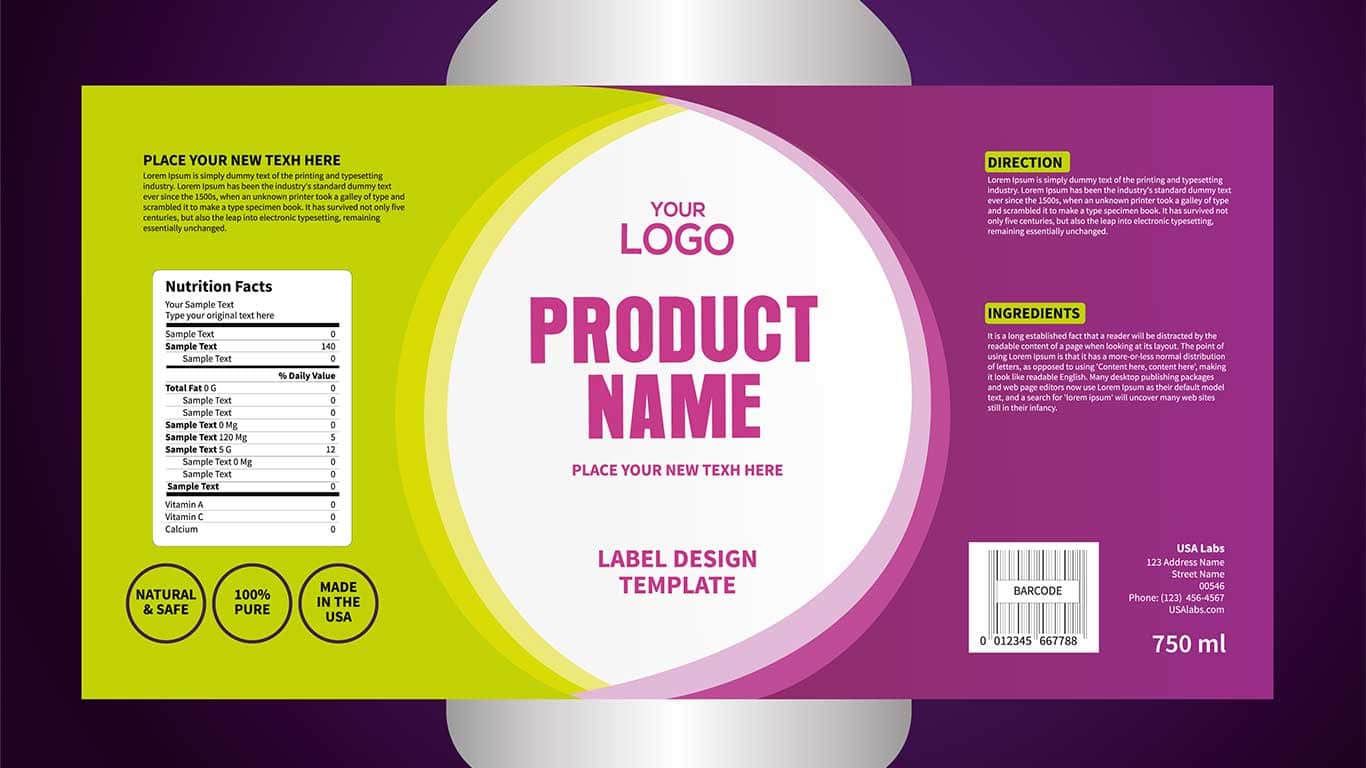SaaS PLM software allows your food manufacturing facility to continue working on multiple critical projects no matter where in the world individual employees are located.
A decade ago, adopting SaaS seemed like a “technology decision.” IT and OT might argue on what was more secure, stable, and long-term. Today, we know that SaaS solutions can be made fully secure. More traditional industries are rapidly adopting cloud computing in order to reap the benefits of enabling remote work. The decision to choose SaaS is no longer just about the tech.
Free E-Book
11 reasons to switch to SaaS for PLM & Supply Chain Management
Companies that adopt remote, cloud technologies provide themselves with key strategic advantages.
During global forced remote work orders, these companies can innovate faster and keep working while office workers at other brands are stuck home without access to critical systems.
In this post, we’re exploring the differences between SaaS PLM and on-premise PLM and the number of advantages that SaaS PLM offers the food manufacturing industry.
The differences between SaaS PLM and on-premise PLM
As you might know, PLM stands for Product Lifecycle Management. This type of software helps your company digitally manage the following:
- Master data management
- Stage gates and workflows
- Supplier contracts
- Product recipes
- User access and approval processes
- Inventory
- Ingredient traceability
- Regulatory compliance
Many PLM systems offer the above functionality. However, not all of them are tailored to the needs of your specific industry. And not all of them rely on the same systems architecture.
Many legacy PLM systems are on-premise, meaning that the software is installed in your local network. Your company most host the solution and it needs to be installed on all local devices. This is the way that all software was delivered in the 80s and 90s.
With the wider prevalence of the internet, more and more software companies started offering a SaaS model in the 00s. By the early 10s, SaaS became widely adopted in more modern industries, with traditional industries continuing to increase their adoption rates every year of the past decade.
Here are the major differences between SaaS and on-premise.
- Remote connectivity – Because SaaS products are hosted in the cloud, they can be accessed remotely. Anywhere that employees are (whether at home or traveling), they can login and access the projects that they have permissions for, based on the account level, whether that’s administrative or something else. Nothing about their access changes if they’re in the office or somewhere else. With on-premise solutions, it can be difficult or impossible to access the software when away from the office.
- Security – While cloud technologies and on-premise software can be equally secure, they approach security differently. With on-premise, firewalls, VPNs, antivirus software, and physical security measures, on-premise security must typically be managed by the internal IT team. Meanwhile, cloud providers manage security for their customers using data encryption, multifactor authentication, and other security measures. Cloud security is typically more affordable because the vendor is managing it for a large number of customers, so it is more scalable.
- Cost – There are a lot of factors that account for why SaaS applications are much more affordable than on-premise software. As mentioned above, one of these is security. It is cheaper for manufacturers to pay for their SaaS provider to manage security (holding to very specific SLAs), than it is to handle this in-house for on-premise solutions. Also, rollout and implementation is much more affordable for SaaS, which drives down the initial and overall costs of the application. In addition, because SaaS apps are more scalable, they also tend to be priced a little lower. But of course, there is huge variability in SaaS pricing, and critical enterprise solutions can be similar in cost to their on-premise counterparts.
The most common misconception about SaaS PLM
There’s a common misconception that keeps food manufacturers from experiencing the strategic benefits of a SaaS PLM. This misconception is that SaaS PLMs are not secure. This simply isn’t true.
SaaS PLMs manage DevSecOps and utilize data encryption, multifactor authentication, and other security measures to keep their products secure for remote access. These companies run continuous automated security testing and also manually conduct penetration tests to attempt to hack into their own systems.
Unfortunately, the security misconception began over two decades ago, and today cloud security is just as secure if not more so than on-premise software.
Advantages of SaaS PLM for the food industry during remote work
With the unsecure misconception out of the way, let’s explore the advantages that food manufacturers experience when switching to a SaaS PLM.
Continued innovation and competitive advantage
With unprecedented numbers of office workers suddenly working from home all around the world, there are two very different experiences occurring. For companies that were already utilizing 100% SaaS applications, their information and creative workers are not dealing with mass changes to their work. Sure, they can’t conduct in-person meetings, but they can still login to and collaborate with all of the same software as before.
But for companies that didn’t already have widespread cloud computing, their information and creative workers are majorly stalled.
Food manufacturers that use a PLM SaaS can continue to innovate new recipes and work at the same rate of execution that they did before. In fact, with less distractions, office workers might even be more productive than before.
While some food manufacturers are unable to test new product formulas, you want to be one of the companies that is still innovating. Compound that advantage over a few months’ time, and you’ll be much farther ahead of competitors in terms of innovation.
Ingredient sales and application engineering
For manufacturers that make and sell ingredients to food brands, they can continue to operate as usual while working remotely.
With remote-access SaaS, the technical sales team and application engineers can continue to:
- Collaborate with new leads and existing customers
- Securely access customers’ formulas
- Work on new formulas that include the proposed ingredients
- Share the product information for the new formula with updated sugar content, fat content, etc.
- Finalize deals
Technical sales representatives that sell ingredients often travel as part of their work. Even when the rest of the company isn’t working remotely, they will still need remote access to do their jobs as efficiently as possible. Providing remote access to employees in certain roles can provide strategic advantages regardless in any global climate.
Moving forward with supplier contracts
When forced to work remotely, work for some employees can come to a complete stop. If product and innovation teams can’t access the systems they use to collaborate with suppliers, then things can move much slower.
Even when the world isn’t required to work remotely, unoptimized processes can slow everyone down.
Supplier contracts are often handled in a series of back and forth emails, with changes made to Word documents that can be challenging to keep track of.
By using a PLM with robust supplier management features, your team can move forward with specifications management, legal agreements, timelines, certification requests, certification storage, and other regulatory compliance requirements.
Without required remote work, the absence of a streamlined process means that innovation slows. During remote work, the lack of a SaaS PLM means that supplier relationship management either halts (for new contracts) or plods forward at an extremely inefficient pace.
Cheaper, more optimized information labor processes
A SaaS PLM can have a positive impact on a variety of information management processes. Not only product innovation, sales, and supplier contracts, but other processes too. For example, product information needs to move from the testing phase to the development phase to the packaging and consumer information phase.
Without a SaaS PLM, the process of moving this product information along can be extraordinarily complex and messy. Employees are downloading and uploading different documents, and version control is all but impossible.
With a SaaS PLM however, employees can collaborate on the same product information spec and make direct changes, which can be approved or disapproved by the appropriate admin. As the product moves through various stages, so too does the information. While working in the cloud, everyone can instantly see the most accurate and current information.
Depending on the workflows in place for your various products, there are countless other ways that a SaaS PLM can speed up information work.
How to implement a SaaS PLM during required remote work
The above strategic business advantages are clear motivations for adopting a SaaS PLM. But what can you do if your information workers have already gone remote and you don’t yet have such a system in place?
Fortunately, a SaaS PLM can be implemented remotely and doesn’t require in-person meetings with the vendor. To have the most success with remote PLM implementation, be sure to work with a vendor that is experienced in remote rollout and that has tailored their PLM solution to your industry, which will be speedup the process.




